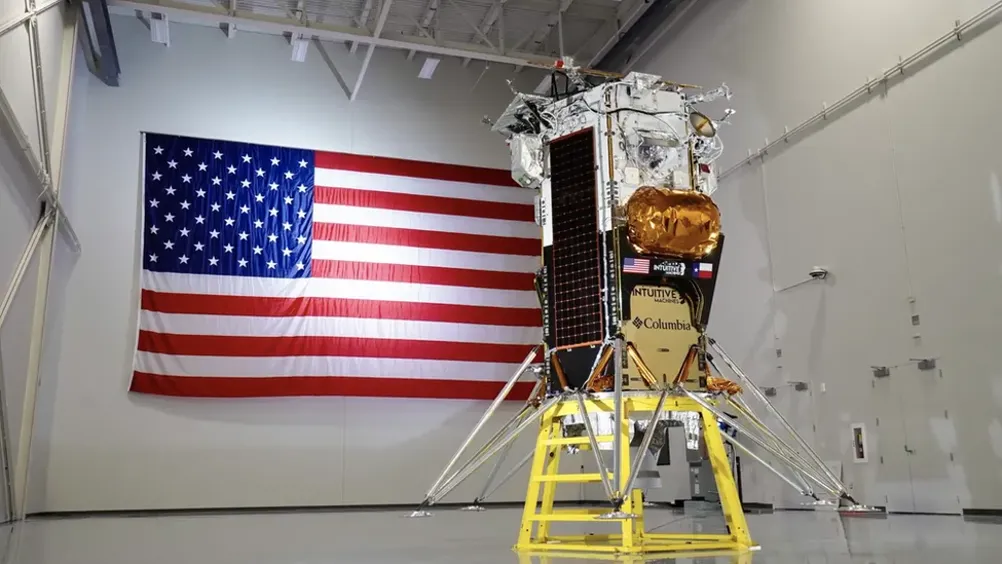Much like 2023, the space industry is off to a shaky start, exemplified by the recent failure of the Peregrine moon lander. Whilst the ULA Vulcan rocket launched successfully after a delay of several years, it fell short of its goal of reaching the Moon due to a stuck valve. These complexities highlight the continued complexity and unpredictability of space exploration.
The shift to modern space
The Peregrine launch was sponsored under the NASA’s Commercial Lunar Payload Services project, where the space agency is paying to include payloads on commercial launches. This demonstrates a shift in how space agencies are collaborating with commercial entities to overcome the challenges of modern space missions.
Related content
Space technology has advanced significantly since the first Apollo mission. Prior to the space programme, computers filled entire rooms. Apollo engineers and scientists faced numerous challenges, including how large machines needed to be miniaturised to work on the Columbia command and service module, as well as the Eagle lunar module. This led to the first digital general-purpose computer.
A trip to the Moon was never going to be a one-way ticket; NASA prioritised the safe return of Apollo 11’s crew. Unlike today’s consumer technology, flight computers needed a high level of reliability. The Apollo mission used the least amount of code needed to launch safely. Software was still an emerging field, and operating systems and programming languages were still evolving. The available memory was tiny by today’s standards – 74K of ROM and 4K of RAM. However, the flight computers were a huge step forward in computing.
NASA had to order components hardened for space applications, such as electromagnetic interference (EMI). Today’s space vehicles can now use commercial components, as design and manufacturing have improved performance and lowered costs. The capability of a smartphone versus what was on Apollo varies greatly – not only is the performance greater, but it is also more reliable. Technology has increased in capability and opened space to more users.
Competition vs collaboration
As more nations enter the market there will be an increase in partnerships. The growing number of launch vehicles will also lead to more opportunities for countries and commercial enterprises to launch payloads. Besides the UK and EU, spaceports are also being developed in Canada and the US. These spaceports will add additional launch capabilities and provide opportunities for companies to use these locations for the design and construction of systems. As satellite constellations grow, new players will emerge from around the world, using these systems for communications and data collection.
As future exploration becomes more challenging, and countries set their eyes on bigger projects, increased collaboration is inevitable. More partnerships will be required for space stations and operations on the Moon. India’s recent success landing on the South Pole of the Moon will see it become a new partner of choice.

From the large-scale multi-country Artemis project, to the NASA Commercial Lunar Payload Services project, the Moon has become a place to demonstrate technical capabilities. Despite the failed Peregrine mission, Japan (JAXA) successfully landed its Smart Lander for Investigating Moon (SLIMaC) and the Intuitive Machines lander is scheduled for a mid-February launch.
From establishing bases to supporting launches for longer flights to Mars, the Moon has become a source of competition for space explorers. The International Space Station (ISS) was a prime example of the power of collaboration in space, featuring NASA (United States), Roscosmos (Russia), JAXA (Japan), ESA (Europe), and CSA (Canada). There have also been visits to the ISS by astronauts from 21 additional countries.
By 2030, the ISS will conclude its mission, with new stations being built by China, commercial enterprises, and NASA supporting stations through several companies. More companies developing spaceports for launch capabilities will help to decrease the costs of launches and increase their frequency - manufacturers will no longer have to ship systems long distances or queue for a spot on a launch vehicle. Spaceports will create a venue for launch providers, space vehicle manufacturers, and integrators to set up operations.
In 2024, expect a busy year with Moon missions, satellite constellations, operational spaceports, and space tourism, bringing both opportunities and challenges.

Paul Kostek is an IEEE senior member and advisory systems engineer with Base2 Solutions











Water Sector Talent Exodus Could Cripple The Sector
Well let´s do a little experiment. My last (10.4.25) half-yearly water/waste water bill from Severn Trent was £98.29. How much does not-for-profit Dŵr...